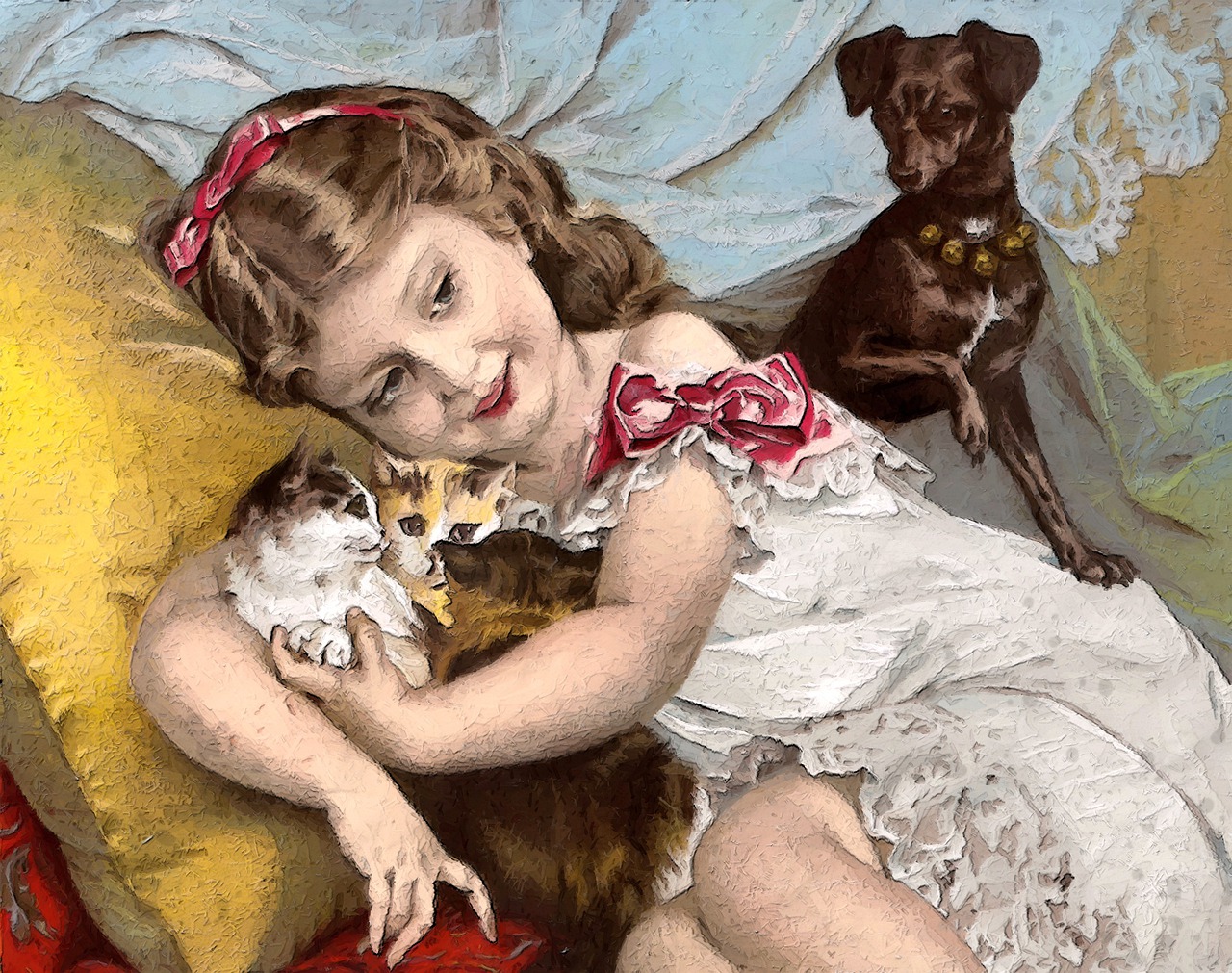Which Pet Should I Choose for My Child?
Contents
– Pet and child: at what age, which constraints?
– Which pet to choose for your child?
For several weeks now, your child has only one fixed idea, and you’re trying to convince him to enlarge the family by taking in a pet…
Is it the ideal opportunity to make him/her responsible and teach him/her respect towards the animal world, or is it an additional constraint that will complicate an already busy daily life? It is advisable to weigh the pros and cons carefully before committing to a long-term relationship!
Pet and child: at what age, what constraints?
Pampering a living being
For a child, having an animal companion is an undeniable source of pleasure:
– to have a play partner, inclined to follow him in his races in the garden, to play with a piece of string, to make games of hiding and seek, … ;
– enjoy cuddly moments: the contact of his animal, the softness of his coat, his affectionate look are lovely comforts.
The child will also appreciate taking care of an animal to reverse the roles. Taking care of others, as those around him take care of him, is very gratifying! He can thus, among other things, take pleasure in:
– feeding it, giving it water;
– brushing his coat;
– maintaining the place where he sleeps.
However, it is essential to keep in mind that a child will not be able to take full responsibility for his animal before the age of 12, depending on the maturity of each individual.
The parents must therefore be prepared to assume the consequences of the adoption!
Please note: having an animal confronts the child with the cycle of life: having it as a baby, seeing it grow up and, one day, disappear, contributes to making the child aware of the normal evolution of a living being.
An animal, not a toy

Living with a pet is an excellent opportunity to make your child aware of the respect he or she should have for all forms of life. An animal is not a stuffed toy that he/she can handle at will without considering its reactions.
The child must be accompanied so that it integrates the fact that:
– His companion is not always available to play. It is advisable, for example, to leave it alone when it sleeps, during its meals, or when it is washing itself.
– He must be gentle with his pet and avoid shouting or making big gestures when he is close to him.
Precautions to take
If it feels threatened by inappropriate behavior, an animal sometimes reacts strongly: a cat’s pawing, a dog’s growling…
Be careful: you should never leave a young child alone with an animal.
Later on, he will learn to decipher the messages sent by his companion when he needs peace.
Which pet should I choose for my child?

The list of pets is long and has grown with new pets like snakes, lizards, etc.).
Note: depending on his personality, your child will be more sensitive to one or the other. Discuss it together to make him aware of the particularities of each one and make an informed choice!
Here are some possible choices:
– Dog. Hosting a representative of the canine population has strong constraints:
◦ these animals need to be walked several times a day and to have access to a garden;
◦ some dogs can’t stand being left alone at home and multiply the mischief in the absence of their masters (gnawed objects, incessant barking, …);
◦ for extended absences, a foster solution will have to be considered (friends, family, or specialized housing).
Note: they are, on the other hand, often very affectionate and always available for caresses and games.
– The cat. More independent than a dog, it lives very well the absences of its foster family if it can come and go as it pleases on its territory.
– Rodents and rabbits are lively, curious little animals with whom it is possible to develop a special relationship. These include:
◦ Guinea pigs, nice size, are robust and can be brushed, cuddled easily.
◦ Hamsters are much more fragile, to be reserved for older children. They live mainly at night, so interaction is limited during the day.
◦ Mice and rats are very endearing and facetious. But their life expectancy is short, two to three years.
◦ Gerbils are easily tamed and very active; it is advisable to have at least two as they are very social animals.
◦ Chinchillas are nocturnal animals, a little fearful at first but need a lot of attention. They live for about 10 years, sometimes up to 20 years.
Please note: if you choose a rodent, make sure you provide it with a sufficiently large cage, carefully maintained, and take it out regularly so that it can evolve more freely, under supervision.
– Birds and goldfish: it is difficult for a child to establish a close relationship with these animals… And not everyone can bear the sight of a bird in a cage!
Good to know: According to U.S. pet ownership statistics, there are more than 76M dogs and more than 58M cats in the United States.
Are you looking for the originality of exoticism?
Some children are passionate about unusual animals, such as:
– reptiles (monitors, snakes, lizards…);
– amphibians, spiders (mygales…);
– insects (phasms, ants…).
Please note: it is, of course, possible to welcome these animals at home, but it is essential to be perfectly informed about their needs so that it happens in optimal conditions.
A cost not to be neglected
Fostering an animal represents a certain budget to cover its needs in food, various care, and visits to the veterinarian. For example, a dog costs on average $800 per year, a cat $600…
Stay informed thanks to our contents to cohabit at best with your animal!
And, don’t forget to leave us your comments and share this article.

2 thoughts on “Which Pet Should I Choose for My Child?”